Physical Address
304 North Cardinal St.
Dorchester Center, MA 02124
Physical Address
304 North Cardinal St.
Dorchester Center, MA 02124
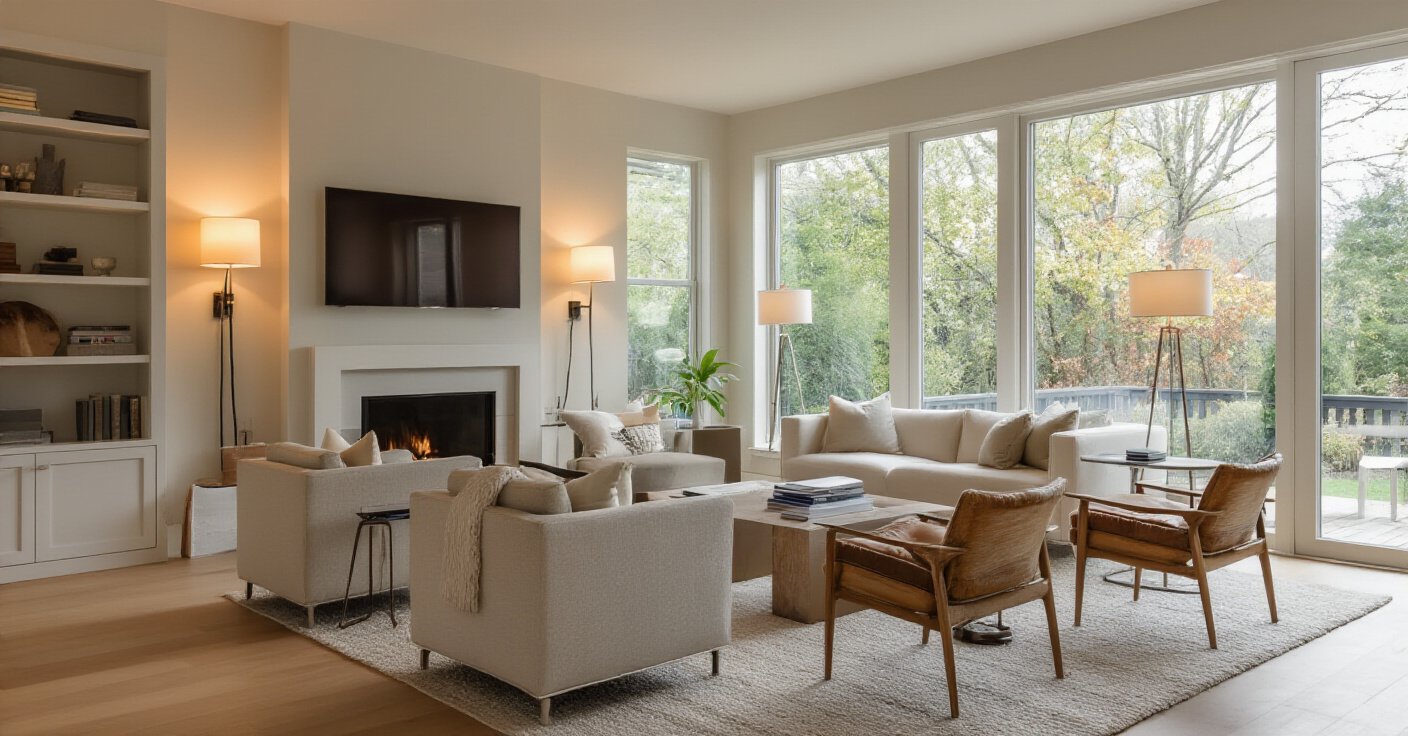
Create a serene living room sanctuary. Nina, a spa designer, shares 19 layout ideas to reduce stress and infuse your home with calming, restorative energy.
You know what people always ask me? It’s never about the most expensive sofa or the “it” color of the year. They ask, “Nina, my living room has beautiful things in it, but it just feels… wrong. Why am I not relaxed here?” They’ve spent so much time and energy on the surface—the pillows, the art, the perfect shade of greige—that they’ve completely missed the one thing that actually matters: the flow. The energy. The very soul of the room.
The secret to a space that truly restores you isn’t in the objects you fill it with. It’s in the space between the objects. It’s the layout. The layout is the bone structure of your sanctuary. Get it right, and your body unclenches the moment you walk in. Get it wrong, and you create a low-grade, constant hum of stress you can’t quite put your finger on. So let’s talk about what actually matters. Forget the trends. This is about creating a space that holds you, supports you, and lets you breathe.
Before we move a single thing, you have to get to know your room. Not just its measurements, but its spirit. This is about listening to the space—understanding its light, its pathways, its purpose—before you try to force your will upon it. This initial quiet assessment is the most important step; it’s the difference between a room that fights you and one that flows with you.
Before anything else, we have to ask the simplest, most profound question: what is this room for? Not what you think it should be for, but what you truly need it to be. The biggest mistake I see is people designing for a fantasy life—like a formal entertaining space when what they truly crave is a cozy family movie night nest. This misalignment is a source of constant, quiet friction.
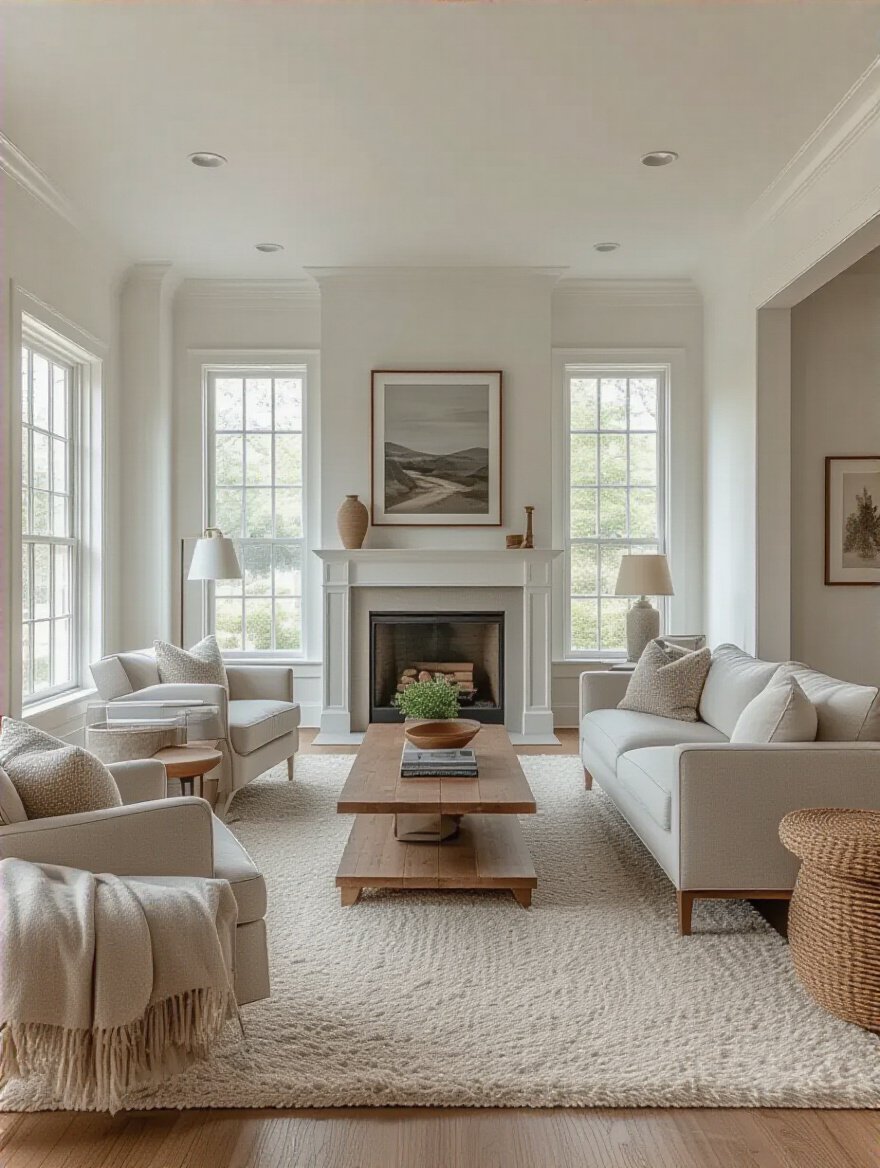
Be honest. Is the most important thing that happens here quiet conversation with your partner? Is it sprawling out for a Sunday nap? Is it a a space where your kids can play freely? Name that one primary intention. For one of my clients, a busy lawyer, her “aha” moment was realizing her living room’s purpose was simply “a place to put my feet up and read with a glass of wine.” Suddenly, the massive coffee table and stiff armchair made no sense. We centered the entire design around one perfect, comfortable chaise and a small table, and it transformed her relationship with her home.
Once you name that North Star purpose, every other decision becomes clear, guiding you to a room that feels like an extension of your own exhale. From there, we can give that purpose its proper physical boundaries.
I know, pulling out a tape measure feels like a chore. But I see it as an act of respect. You’re taking the time to understand the physical reality of the space you’re in. This isn’t about cold, hard numbers; it’s about creating a blueprint for serenity. Guessing is the fastest path to a costly mistake and a room that feels “off.”

Get a good metal tape measure and a notepad, or use a laser measurer if you want to feel like a pro. Measure everything: wall to wall, floor to ceiling, the size of windows, and the location of doors, outlets, and that weird radiator you always try to ignore. I once worked with a client who bought a stunning, custom-made sofa without measuring their entryway first. It was a beautiful, expensive lesson in the importance of knowing your space intimately. It’s now sitting in their (very comfortable) garage.
By creating this map, you’re not just avoiding mistakes; you’re building a mindful foundation for every choice that follows, ensuring your vision can actually come to life. This map is what allows us to see the invisible rivers of energy that flow through the space.
Every room has invisible currents, like rivers of energy that connect one space to another. These are your natural traffic paths—the routes you take from the door to the sofa, from the window to the kitchen entryway. When you block these paths, you create stagnant energy. It’s that frustrating feeling of having to squeeze past a chair or detour around a coffee table. It’s a tiny, daily aggravation that adds up to a subtle sense of stress.
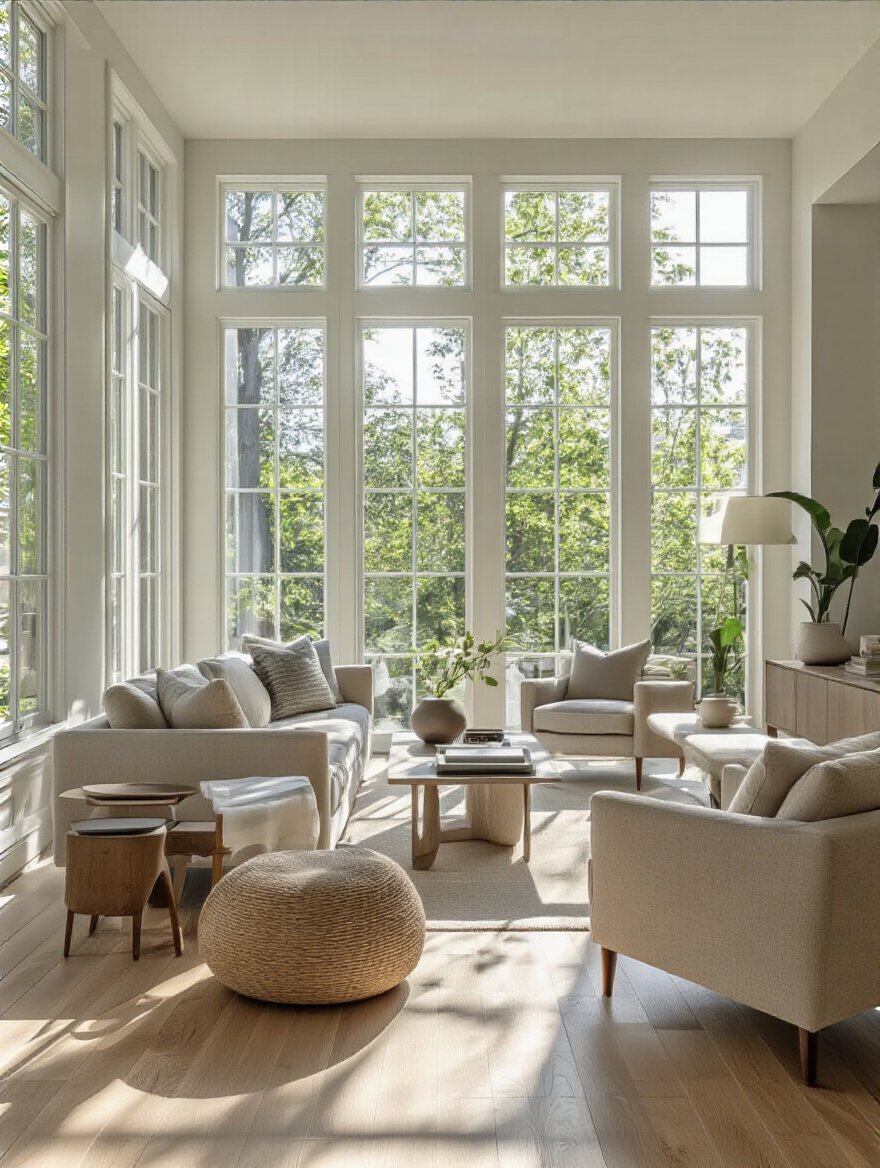
“Think of it like a river—you want a clear path for it to flow, or else it gets blocked up and floods.”
Spend a few minutes just watching how you and your family move through the room. Where are the main highways? Sketch them on your room map. As a general rule, a main thoroughfare needs at least 30 to 36 inches of clear space. This isn’t just a design rule; it’s about creating a feeling of ease and generosity in your home. You should be able to move through your sanctuary without thinking, without bracing for impact.
Before you commit to a layout, use painter’s tape on the floor to mark out the edges of your furniture and your pathways. Walk through it for a day. It’s the easiest way to feel the flow before you do any heavy lifting. Once the pathways feel effortless, we can turn our attention to the room’s life force.
Light is the most powerful tool we have for shaping the feeling of a room. It’s the life force. It dictates our mood, our energy, and how we experience a space. Before you even think about furniture, you need to understand how light lives in your room. Where does it land in the morning? Where does the golden hour light stream in? Where are the perpetual shadows?
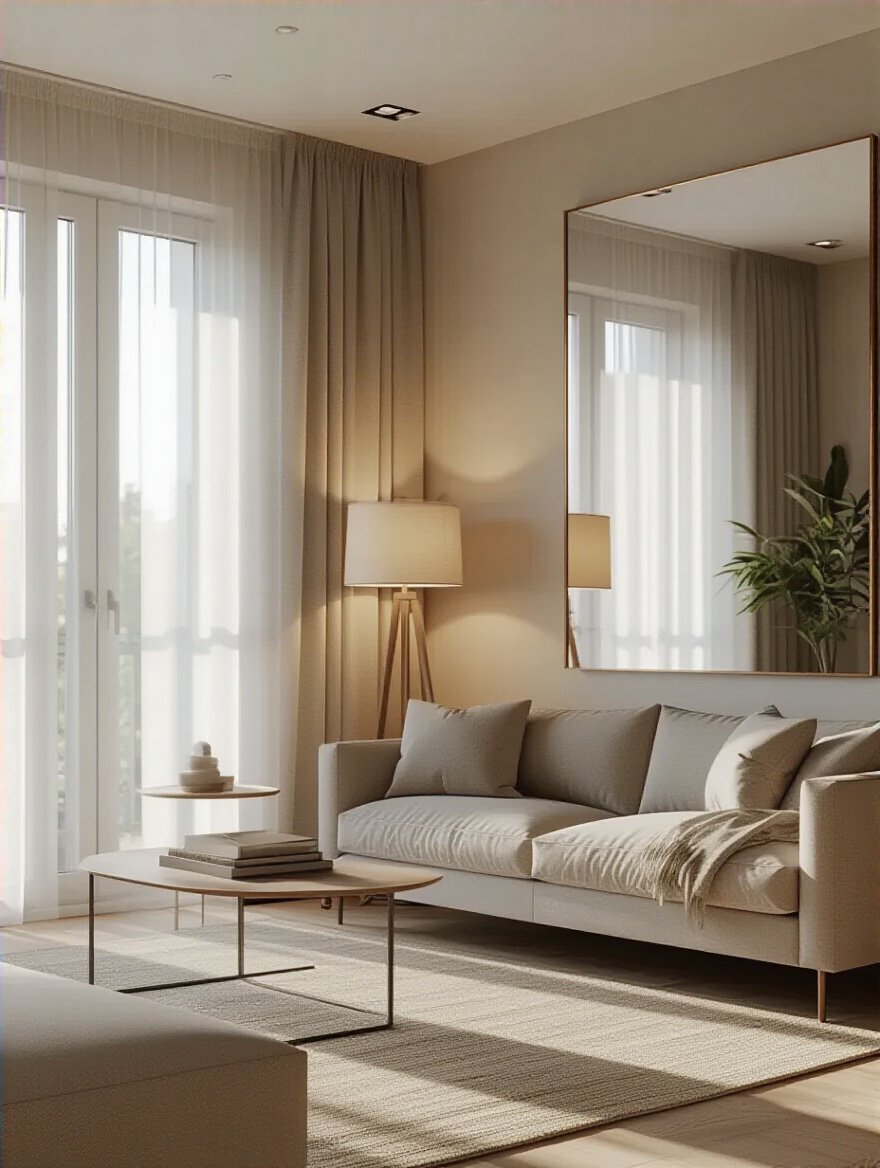
Spend a day just noticing the light. Take pictures at 9 a.m., at noon, and at 5 p.m. You’ll be amazed at what you see. You might discover a corner you thought was dark and useless is actually flooded with beautiful morning light, making it the perfect spot for a reading chair. Forgetting to do this is a huge mistake. A client once placed their TV on the wall opposite a huge, west-facing window. Every afternoon, the glare made it completely unwatchable, turning their “relaxing” evening ritual into a frustrating battle with the blinds.
Once you know your natural light, look at your artificial light. Do you have a single, harsh overhead light? We need to fix that. A truly serene space layers different kinds of light to create a gentle, adaptable glow. Understanding your light sources is the key that unlocks the door to a room that feels truly alive.
Now we get to the art of it. We have our map, we understand our light, and we know our intention. This section is about the core principles that will guide your hands as you start to place furniture. These aren’t rigid rules, but gentle guides for creating balance, connection, and ease.
A room without a focal point is like a conversation without a topic. It wanders aimlessly and feels unsettled. Your eye needs a place to land, a visual anchor that tells it, “You are here. Rest.” This anchor is the heart of your layout, the point around which everything else revolves. It gives the room a sense of purpose and calm.

This could be an existing feature like a beautiful fireplace or a large window with a view. If your room doesn’t have a natural one, you create it. A large, compelling piece of art. A stunning media console. I once worked in a completely characterless box of a room, and we installed a simple, wall-mounted electric fireplace. Instantly, the room had a soul. It went from a pass-through space to a destination.
Your main seating should be oriented toward this focal point. This single decision will simplify every other choice you make, providing an immediate sense of order and intention. By giving the room a heart, you give yourself a place to feel grounded.
The goal of a living room is often connection, yet so many are laid out like waiting rooms, with all the furniture pushed against the walls, shouting at each other across a vast empty space. A truly restorative space invites intimacy. It encourages you to lean in and speak in a normal voice. This is achieved by creating dedicated conversation zones.
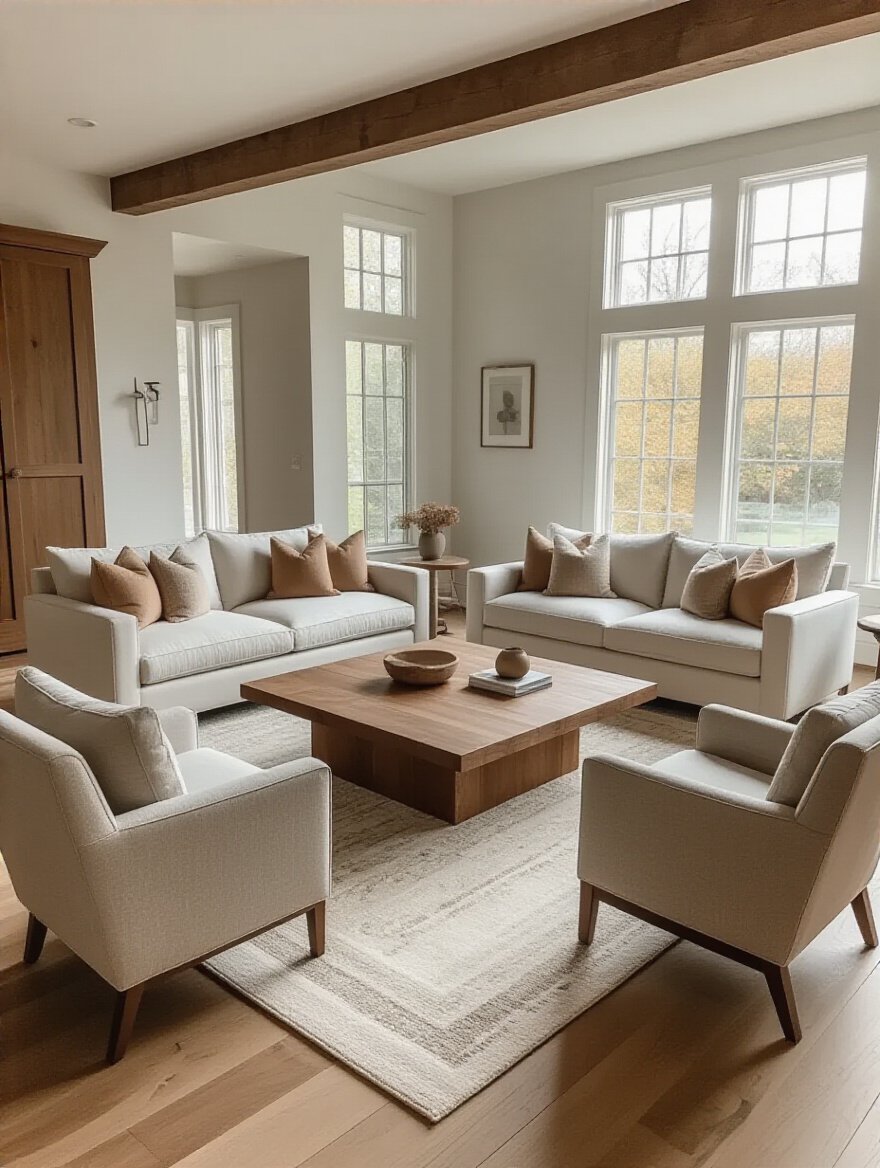
Pull your furniture away from the walls and group it together. Your sofas and chairs should be close enough that you can speak without raising your voice, typically with no more than 8 feet between them. A great layout often has two sofas facing each other or an L-shaped arrangement. For a large room, you might have one main zone and a smaller, more intimate nook with two armchairs and a small table. Use an area rug to visually tie the grouping together, like a little island of connection.
This isn’t just about placing furniture; it’s about choreographing human interaction. You’re creating a space that makes connection feel effortless and natural. From here, we ensure that moving around these zones is just as effortless.
This feels technical, but it’s all about creating a feeling of generosity. Nothing creates subconscious stress like feeling squeezed or constricted. Ensuring there’s enough room to move freely is an act of kindness to yourself and your guests. It allows the energy of the room—and the people in it—to flow without friction.
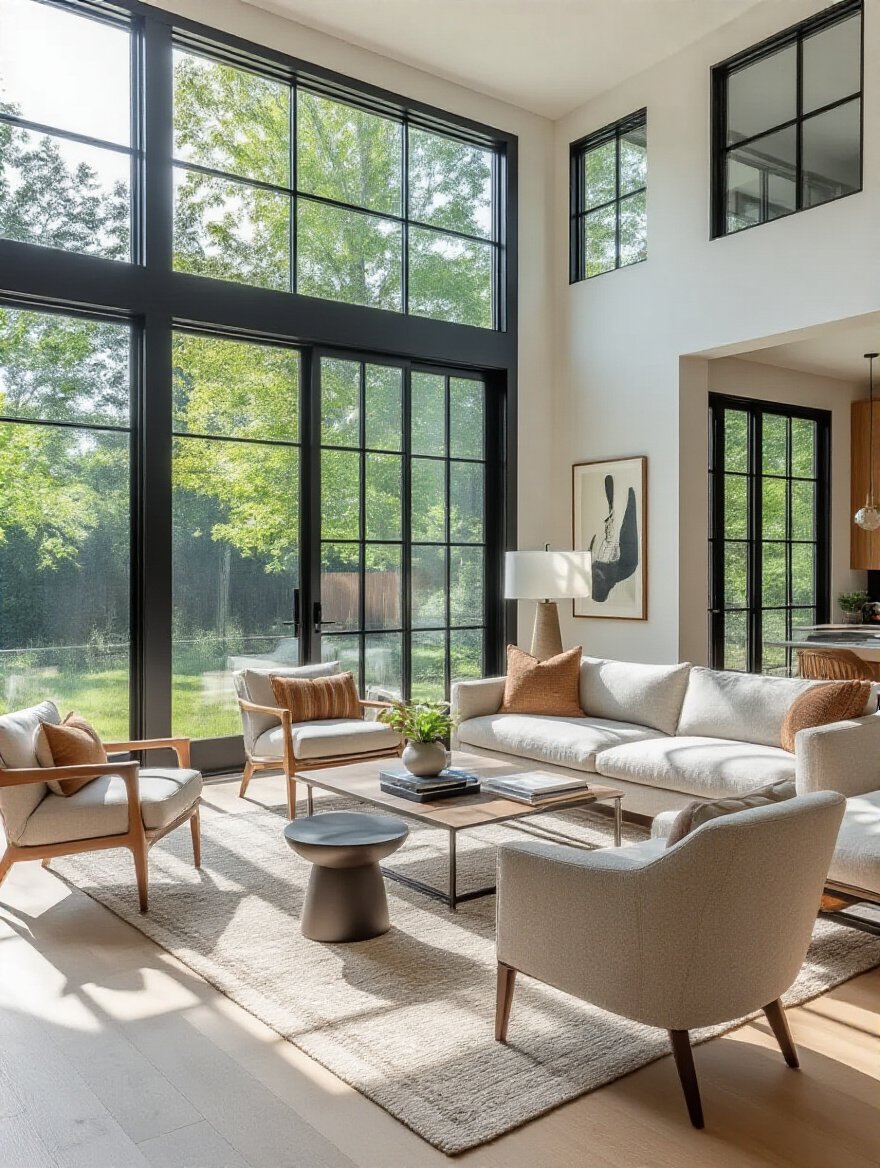
Here are the only numbers you need to remember: aim for about 18 inches between a coffee table and your sofa. This is close enough to reach your tea, but far enough to not feel trapped. For main walkways—the paths you take to enter or leave the room—give yourself a gracious 30 to 36 inches. This is especially important for aging in place or for families with small children. It provides a sense of safety and ease.
One of the biggest improvements I ever made in a client’s home was simply replacing a huge, chunky coffee table with two smaller, lighter ottomans. It opened up the pathway, made the room feel twice as big, and removed that “I’m going to bang my knee” tension everyone felt when they sat on the sofa. With the pathways clear, we can now think about the visual energy of the room.
Balance is what makes a room feel settled and serene. It’s about distributing the “visual weight” of your furniture so one side of the room doesn’t feel heavier than the other. You can achieve this in two ways, and the one you choose will define the room’s entire personality.
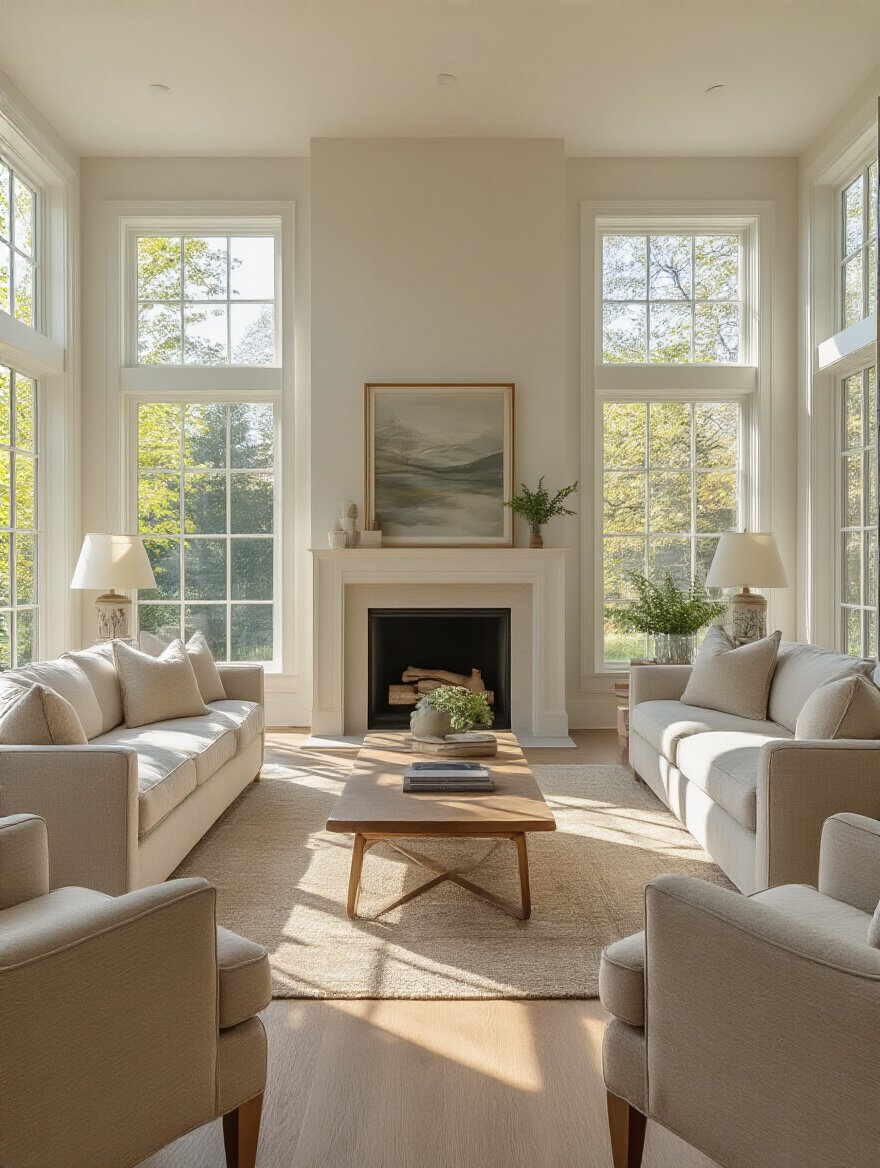
Symmetry is your tool for creating a feeling of calm, order, and formality. Think of two identical sofas facing each other across a central fireplace, with matching end tables and lamps. The effect is deeply restful and peaceful. Asymmetry, on the other hand, creates a more dynamic, modern, and relaxed energy. This is where you balance a large L-shaped sofa on one side with two lighter armchairs and a tall floor lamp on the other. It’s not about matching items, but matching their visual presence.
Here’s my secret shortcut: the “photo check.” Arrange your room, then stand back and take a photo of it. Looking at it in 2D makes imbalances jump out at you instantly. You’ll immediately see if one side feels too heavy or too empty. It’s the most effective way to see your room with fresh, objective eyes.
In our culture of “more,” we’re taught to fear empty space. We feel a need to fill every wall and every corner. But in spa design, we know that the most luxurious element in any room is negative space. It’s the visual equivalent of a deep breath. It’s the quiet that allows the beautiful things you’ve chosen to actually sing.
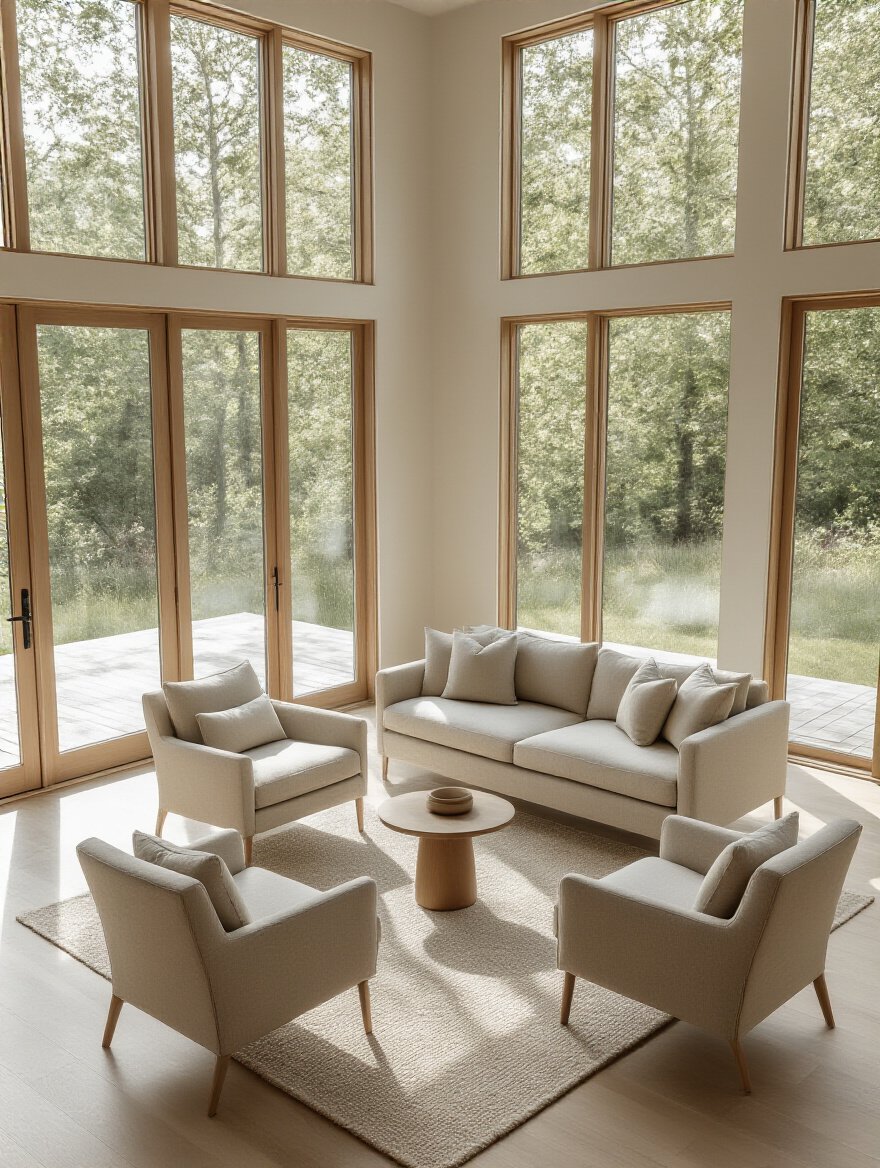
Overcrowding is a sensory assault. A cluttered room creates a cluttered mind. So, be brave. Edit. Let things go. Pull your furniture away from the walls. A sofa “floating” even six inches off the wall creates breathing room and makes the entire space feel larger and more intentional. Use transparent materials like glass or acrylic for coffee tables to create a sense of openness.
I had a client whose living room was filled with furniture from three generations of their family. It was beautiful, but chaotic. The process of deciding which pieces truly mattered and letting the rest go was emotional, but the result was transformative. The remaining pieces were finally able to shine, and the room became a place of peace instead of a storage unit of memories.
This is where the plan becomes reality. We’ve done the thinking and the feeling; now it’s time for the doing. Placing your key pieces isn’t just a physical act; it’s about locking in the energy and flow we’ve so carefully cultivated. Each piece has a job to do in creating your sanctuary.
Your largest piece of furniture, usually your sofa or sectional, is the sun in your living room’s solar system. Everything else will orbit around it. Placing it first is the most critical decision you’ll make, as it immediately defines the room’s main function and establishes the primary traffic patterns.
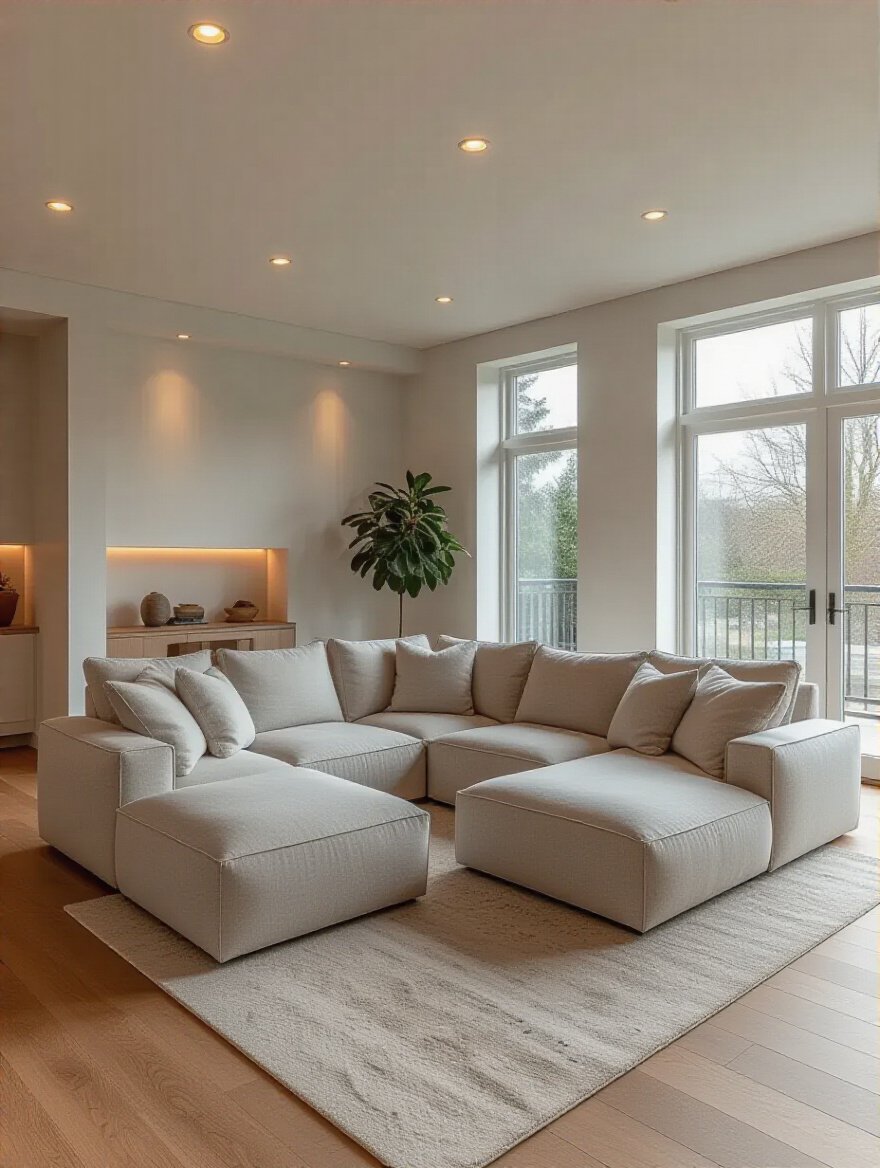
Don’t default to pushing it against the longest wall. Consider floating it in the middle of the room to create a pathway behind it. Or, if you have two sofas, try placing them facing each other to create an instant conversational hub. I learned this the hard way on one of my first projects. I tried to arrange all the small pieces first, and the room felt like a collection of random objects. It wasn’t until I decisively placed the large sofa that the entire space snapped into focus.
Once your anchor is down, you’ll feel an immediate sense of order. It’s the rock upon which you will build the rest of your peaceful space. Now we can ground this anchor and make it feel truly settled.
An area rug is a magic trick. It has the power to define a space, create cohesion, and ground an entire room with a single gesture. But a rug that’s too small is one of the most common design mistakes, and it makes everything feel like it’s drifting in a sad, little sea. It creates a feeling of instability.
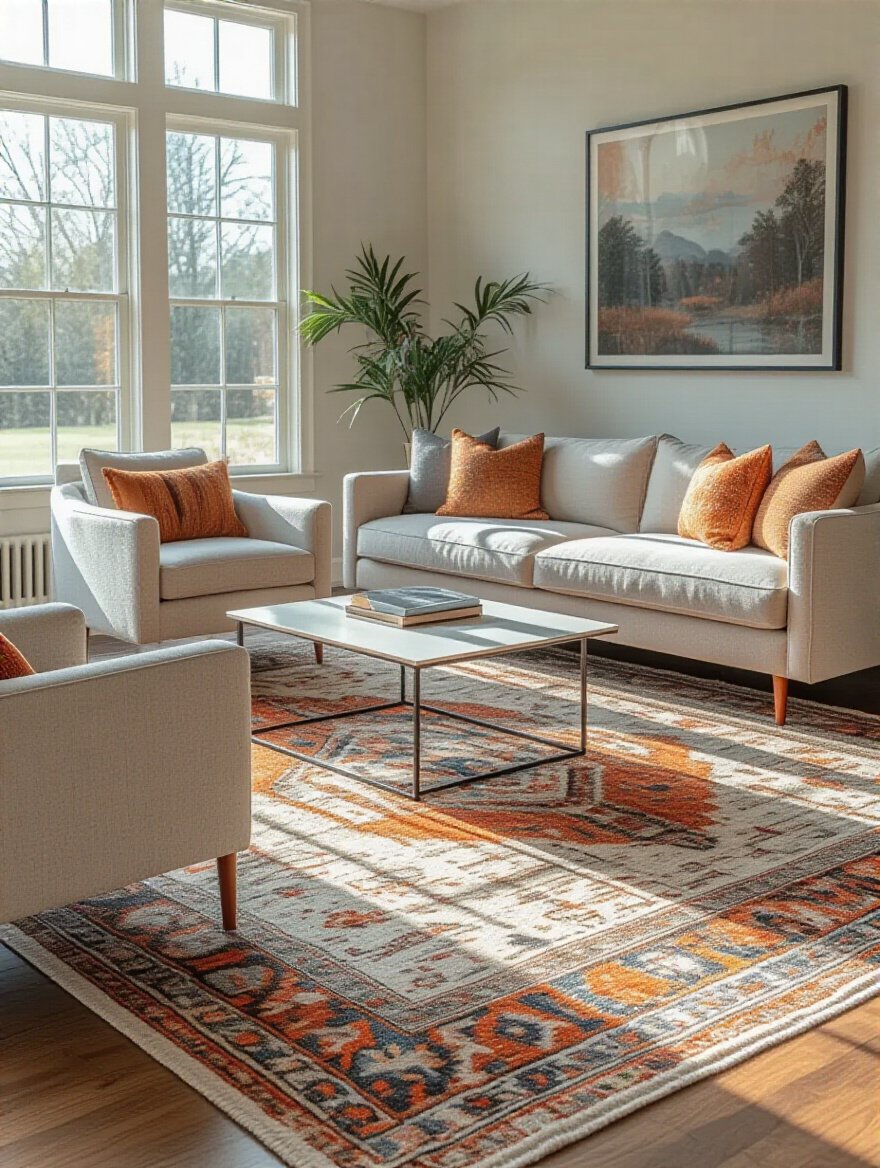
The rule is simple but transformative: your rug should be large enough that at least the front legs of your sofa and all of your main chairs are sitting on it. This physically connects all the pieces, creating a unified, intentional grouping. In a very large room, you can have all four legs of every piece on the rug. If you must use a smaller, more decorative rug, treat it like a coffee table and make sure no furniture legs are on it at all—it becomes a small island in the center.
To avoid a costly mistake, use painter’s tape to mark the dimensions of the rug you’re considering on your floor. Live with the tape for a day. You will know instantly if it’s the right size. With your main seating area now beautifully grounded, we can add the essential supporting players.
If your primary intention is to create a space for connection, especially for a larger family or frequent hosting, a standard sofa and two chairs might feel a bit formal and limiting. A sectional or a multi-sofa layout can be an incredible tool for creating a generous, welcoming, and adaptable seating arrangement that invites lounging and togetherness.

A U-shaped sectional creates an instant “conversation pit,” perfect for movie nights and intimate gatherings where everyone feels included. An L-shaped sectional is brilliant for defining a corner in an open-plan space. Or, consider placing two full-sized sofas directly facing each other. This creates a more formal, but incredibly powerful, conversational zone that feels elegant and spacious. The key is to match the configuration to your room’s purpose.
A family with three teenagers swapped their traditional sofa for a large, modular sectional, and it completely changed how they used the space. What was once a pass-through room became “command central” for the whole family, a place where everyone could pile on together comfortably. This powerful central hub now needs its surfaces.
This may seem obsessively specific, but getting this distance right is the secret to a living room that is truly functional and comfortable. A coffee table placed too far away is useless—you have to awkwardly lunge forward to set down a drink, creating a tiny moment of physical tension. A table placed too close can make you feel trapped and hemmed in.
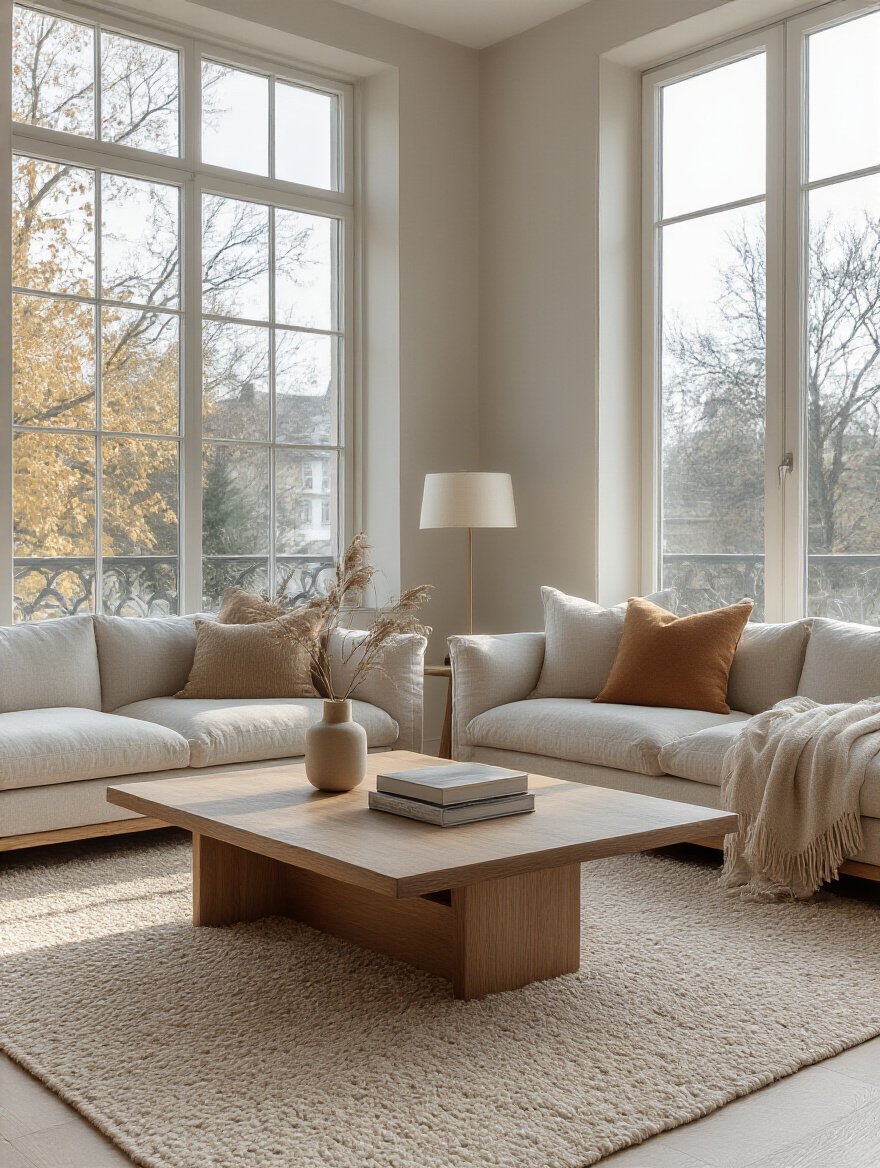
The magic number is 14 to 18 inches from the front of your sofa cushions. This is the sweet spot. It’s close enough for you to effortlessly reach for your book or tea, but provides just enough space for your legs to feel free. It’s a small detail that makes a world of difference in the ergonomic comfort of your room.
Test it out. Sit down on your sofa and see how it feels. Can you reach everything without straining? If not, adjust. This simple act of tuning your space to the needs of your own body is a powerful form of self-care. Next, we bring that same level of care to the areas beside you.
A room with only overhead lighting can feel harsh and unwelcoming. To create a truly serene atmosphere, you must layer your light, and end tables with lamps are the workhorses of this strategy. They bring the light down to a human level, creating warm pools of illumination that are essential for both mood and function.

Choose an end table that is roughly the same height as the arm of your sofa or chair. This creates a clean visual line and puts the surface at the perfect height for easy reach. The lamp on top should be tall enough so that the bottom of the lampshade is at about eye level when you’re seated. This directs the light downward for reading, without shining a harsh glare directly into your eyes.
This isn’t just about reading, either. It’s about creating pockets of tranquility. The soft glow from a table lamp is infinitely more calming in the evening than a bright overhead fixture. It signals to your nervous system that it’s time to wind down. Now that we have our surfaces, we need a place for our things.
Visual clutter is mental clutter. A space filled with remote controls, stacks of mail, and stray toys cannot be a place of restoration. The solution isn’t to banish all your belongings, but to give them a beautiful and thoughtful home. The best storage doesn’t look like storage at all; it blends seamlessly into the decor.
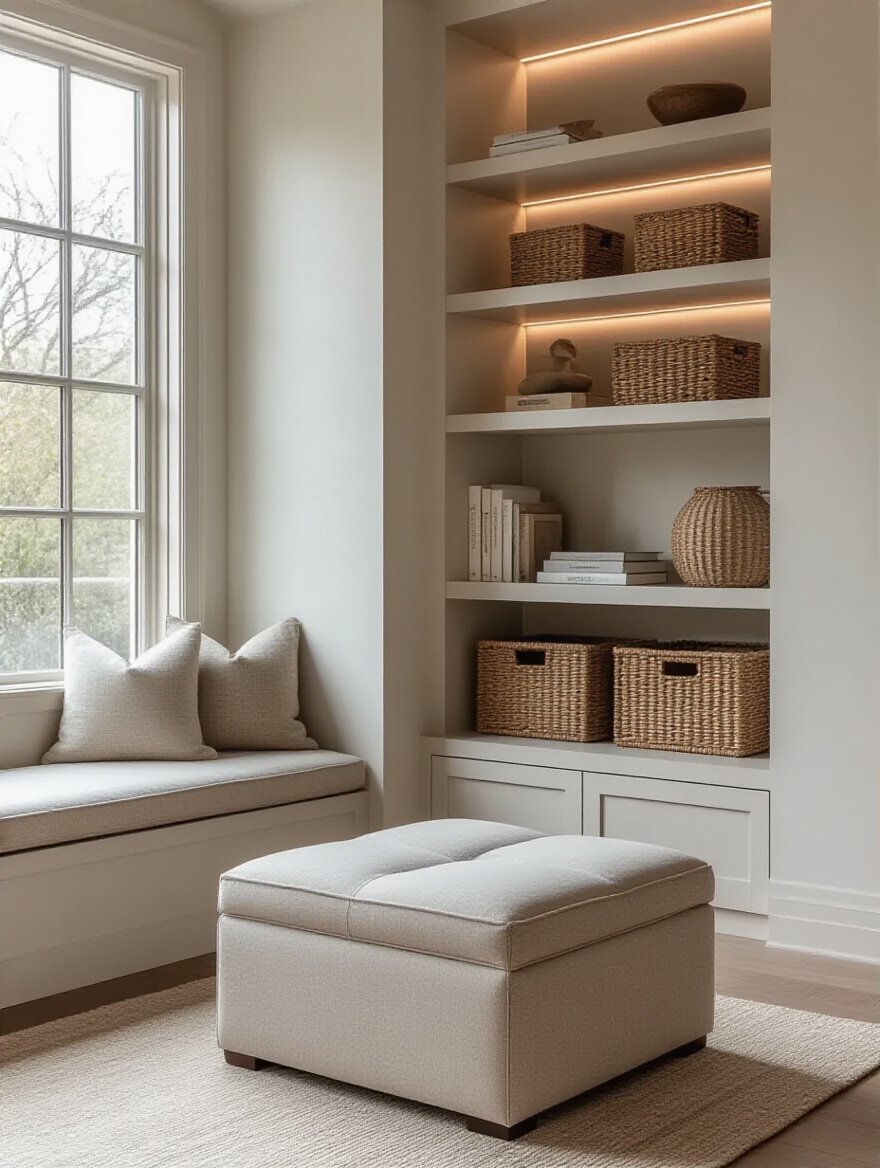
“The most effective storage is often ‘invisible storage.’ When you choose pieces that blend seamlessly with your decor, you achieve both peak functionality and an elevated aesthetic.”
Look for multi-functional pieces. An ottoman with a lid that lifts to reveal hidden storage. A coffee table with deep drawers. A beautiful credenza that can hide all your electronics and media. Use decorative woven baskets to corral blankets or children’s toys, turning a practical need into a textural design element. The goal is a home for everything, so your surfaces can remain clear and your mind can be at peace.
For a client in a small apartment, we used a long, low media console that ran the length of one wall. It provided an enormous amount of concealed storage, allowing the rest of the room to feel open and minimalist. This act of clearing the decks is the final step before we add the truly transformative finishing touches.
With the bones of the layout firmly in place, now we add the layers that give the room its soul and make it truly magical. These are the nuanced, sophisticated touches that elevate a well-arranged room into a transformative space—one that can adapt to your moods and needs with grace.
We’ve touched on this, but it’s so important it deserves its own focus. Think of your lighting in three layers. The first is Ambient light: the general, overall illumination from ceiling fixtures. Put this on a dimmer switch—it’s the most powerful tool you have for changing a room’s mood instantly. The second is Task light: the focused light for activities, like the reading lamps on your end tables.
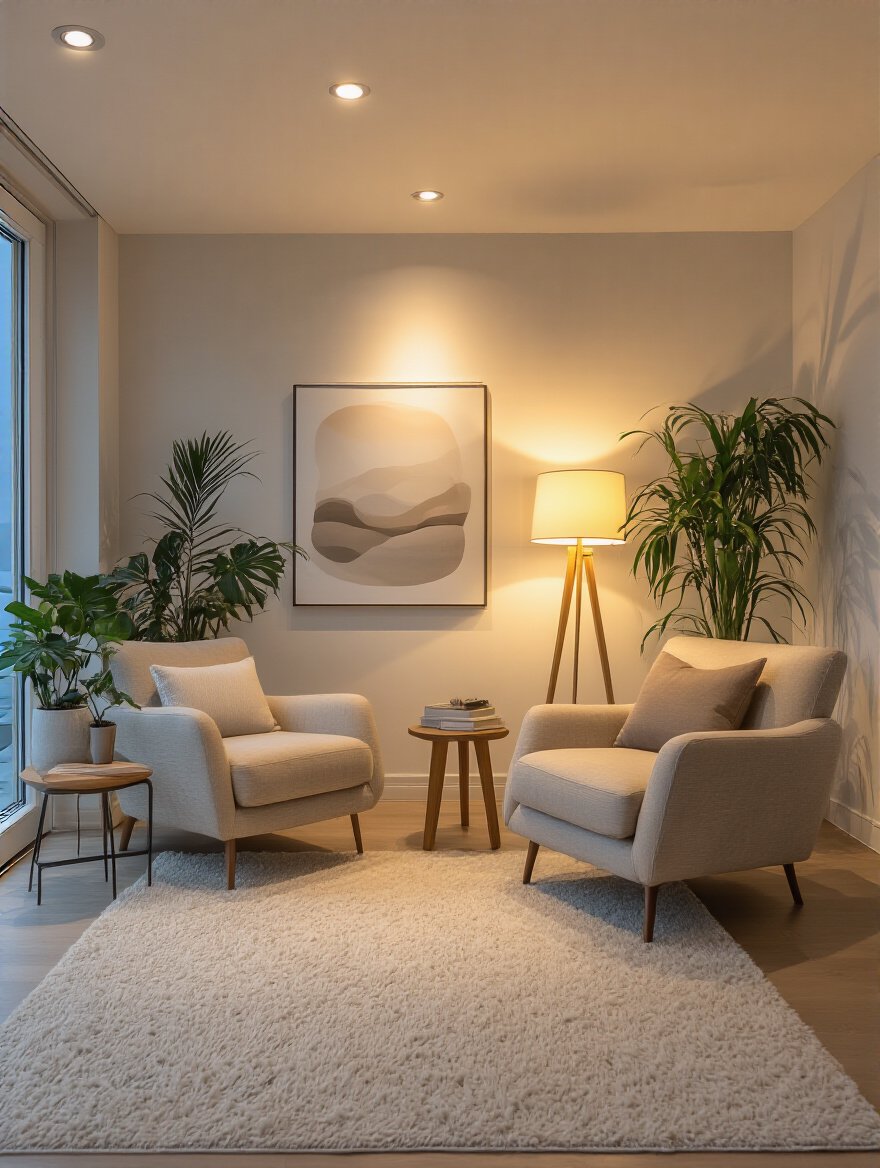
The third, and most often forgotten, layer is Accent light. This is the secret weapon of high-end design. It’s the small, focused light that highlights your art. The uplight behind a beautiful plant that throws dramatic shadows on the ceiling. The picture light over a bookcase. This layer adds depth, drama, and a sense of curated polish to your room. It tells the eye what is important and beautiful. A room with all three layers of light feels complete, sophisticated, and incredibly inviting.
In a large, open-concept home, the living area can feel vast, undefined, and a little cold. The key is to create “rooms within a room” without building a single wall. We do this by using the tools we’ve already discussed: strategic furniture groupings and, most importantly, area rugs.

Use a large rug to define the primary conversation zone. Then, perhaps use the back of the sofa as a soft “wall” to separate it from a dining area. Place a sleek console table behind the sofa to reinforce this division. In another corner of the space, you might lay down a smaller, round rug and place two armchairs on it to create a distinct and cozy reading nook.
These zones provide psychological comfort. They give our brains clear cues about the purpose of each area, making a large, potentially overwhelming space feel intimate, organized, and much more functional. This zoning gives us the feeling of many rooms, each with its own purpose, enhancing the versatility that movable pieces can provide.
The most luxurious space is one that can adapt to your life. A static room that only works for one specific function can feel rigid and limiting. By incorporating a few key pieces of movable furniture, you give your living room the ability to breathe and evolve with your needs.

This could mean small ottomans or poufs that can be pulled up for extra seating during a party. It could be a set of nesting tables that can be separated to hold drinks for guests. My favorite trick is putting a large coffee table on subtle, locking casters. It can serve as a central anchor most of the time, but can be easily wheeled aside to create an open space for a workout, a puzzle on the floor, or for kids to play.
Your home should serve you, not the other way around. Building in this kind of flexibility ensures your sanctuary can be a place for quiet solitude one day and joyous connection the next. Finally, we look up.
In our quest to organize the floor, we often forget the vast, valuable real estate of our walls. Drawing the eye upward is a classic designer trick to make a room feel taller, more expansive, and more graceful. It adds a layer of visual interest that makes a space feel complete and curated.
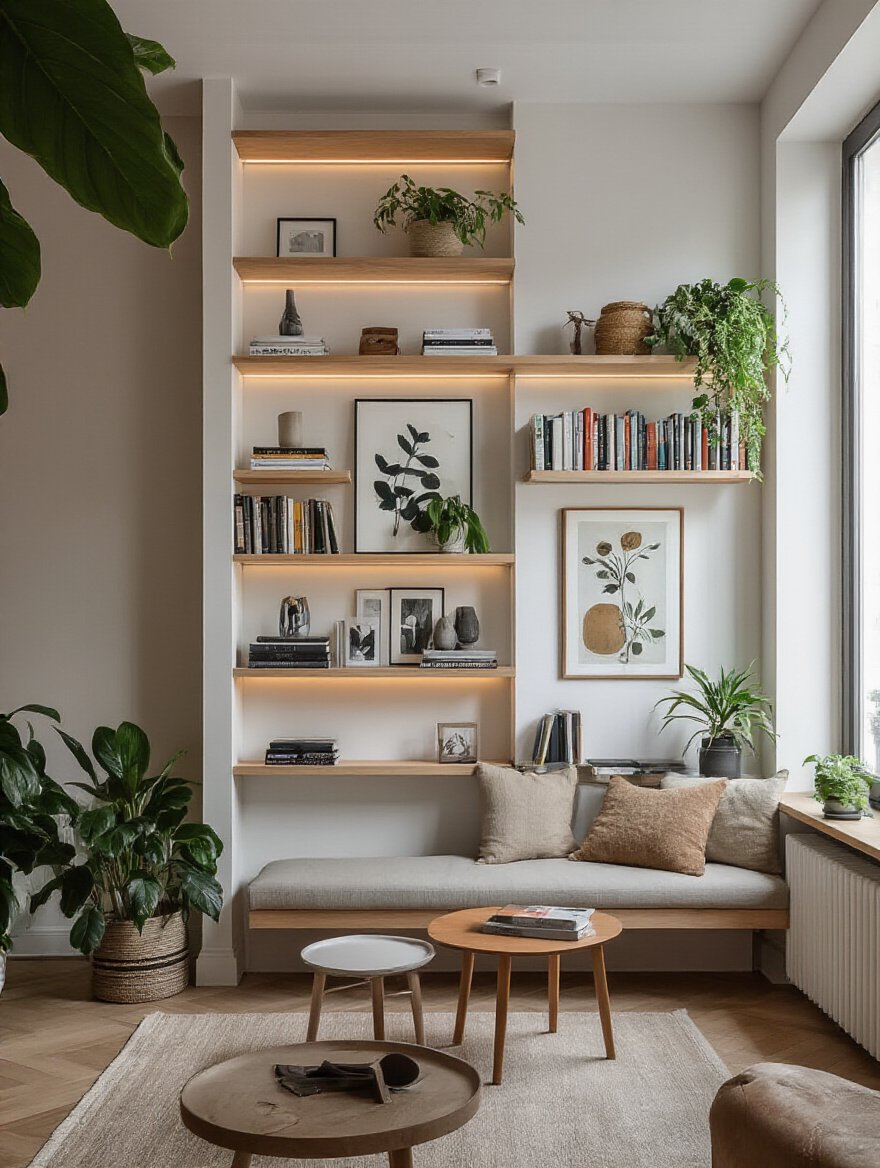
Instead of a low, wide bookcase, consider a tall, slender one. It provides the same storage but lifts the gaze. Floating shelves are wonderful for creating an airy display without the visual weight of a heavy cabinet. And when it comes to art, don’t be afraid to go big. A single, large-scale vertical piece of art or a well-curated gallery wall that stretches upward can create a powerful and dramatic focal point.
In a client’s home with standard 8-foot ceilings, we hung curtains from just below the ceiling line all the way to the floor and installed a tall gallery wall. The effect was immediate and stunning. It gave the room a sense of grandeur and height that made it feel like a completely different space.
Creating a living room that restores your spirit is not about following rigid rules or buying expensive things. It is an act of deep listening—to your own needs and to the silent language of the space itself. We’ve walked through the entire process, from understanding the room’s energy and purpose to placing each piece with intention and layering in the final, soulful touches of light and art.
The true luxury is not a show home, but a space that feels like a perfect exhale at the end of a long day. It’s a room that fosters connection, invites rest, and quietly supports your well-being. You now have the tools not just to decorate a room, but to craft a sanctuary. So take a deep breath, trust your intuition, and begin the beautiful work of creating a home that truly holds you.